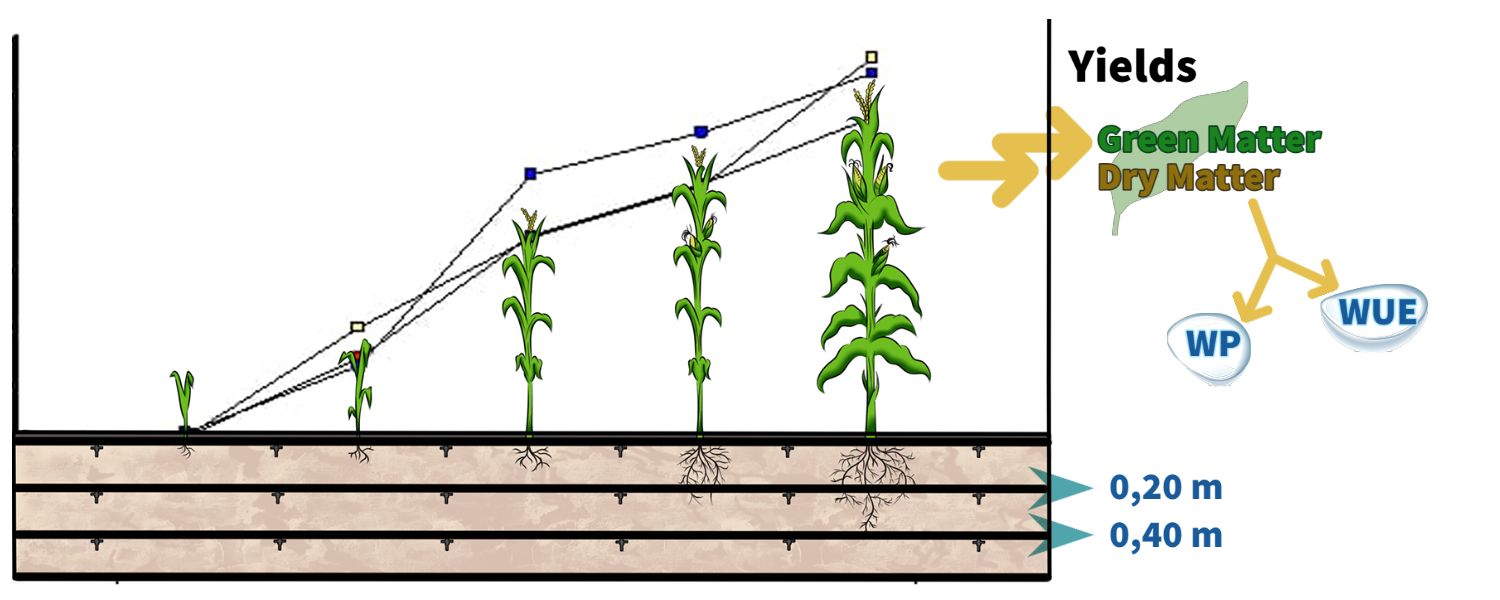Assessment of fodder corn grown under surface and subsurface drip irrigation in Mendoza, Argentina
DOI:
https://doi.org/10.48162/rev.39.047Keywords:
Zea mays L, subsurface drip irrigation, localized irrigation, yield, water use efficiency, water productivity, eficiencia del uso de aguaAbstract
Drip irrigation –surface (DI) and subsurface (SDI)– is one of the best irrigation systems to increase both irrigation and water use efficiency. The objective of this research is to assess and compare the response of fodder corn to SDI treatments at two depths with DI in Mendoza. A full factorial experimental design was used on random plots and measurements were replicated through time. Tests were run in two consecutive cycles. Germination percentage (GP), yield, water use efficiency (WUE) and water productivity (WP) were assessed. High yields ranging from 70,214 to 105,771 kg ha-1 of green matter and from 10,020 to 22,476 kg ha-1 of dry matter (DM) were obtained in both cycles, respectively.
DM production from the first sowing was significantly higher in both cycles under SDI treatment than under DI. No significant differences in WP or WUE were found. GP and soil moisture (SM) did not show differences between treatments, but significant differences were found in SM (p=<0.0001) between the first soil layer and the other two layers.
Highlights
- Germination percentage was not affected by the depth of the drip irrigation lines.
- No significant differences were found in green matter yields between treatments in both crop cycles.
- High crop water use was achieved. WUE values were 12 percent (and up to 41 percent) higher.
Downloads

Downloads
Published
How to Cite
Issue
Section
License
Copyright (c) 2018 Revista de la Facultad de Ciencias Agrarias UNCuyo

This work is licensed under a Creative Commons Attribution-NonCommercial-ShareAlike 3.0 Unported License.
Aquellos autores/as que tengan publicaciones con esta revista, aceptan las Políticas Editoriales.










.jpg)




